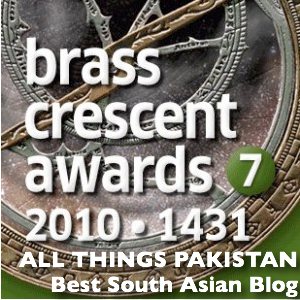The twin villages Ucchali and Dhadhar are the place to be for those who seek happiness in being close to the raw nature and to find the most alluring and fascinating places off the beaten track.
 To travel as a person interested in nature (as if there were other ways to travel) is to have regrets these days. More and more that one would like to have seen is – inevitably, inexorably – already gone. But there are, of course, many such places out there. Only one has to find them. The surroundings of these two quaint villages are examples: a complex of three lakes recognized as International Ramsar Site, hills in the background, tall grass, walking trails, and wonderful people. The lakes are picturesque with their foliage of different kinds of towering grasses, their meadows of floating lotus leaves, their myriads of waterfowl of diverse species. In seasons when lotus and grass come into bud, the lakes present an exquisite appearance, as the water surface along the shore and marshy patches are covered with an unbroken succession of flowers and leaves.
To travel as a person interested in nature (as if there were other ways to travel) is to have regrets these days. More and more that one would like to have seen is – inevitably, inexorably – already gone. But there are, of course, many such places out there. Only one has to find them. The surroundings of these two quaint villages are examples: a complex of three lakes recognized as International Ramsar Site, hills in the background, tall grass, walking trails, and wonderful people. The lakes are picturesque with their foliage of different kinds of towering grasses, their meadows of floating lotus leaves, their myriads of waterfowl of diverse species. In seasons when lotus and grass come into bud, the lakes present an exquisite appearance, as the water surface along the shore and marshy patches are covered with an unbroken succession of flowers and leaves.
I have travelled to, and through, many places but Ucchali Complex, as the three lakes are called, have something for, or do something to, me every time I am there. Every one who visits this place can have the pleasure.
Tucked in the southern periphery of the Salt Range and hemmed in by its higher cliffs, cluster of natural lakes — Ucchali, Khabbeki and Jhallar — is situated near two pastoral villages Ucchali and Dhadhar in district Khushab. Experts say that the lakes have been here for at least 400 years, maybe more. But the complex of lakes first came to prominence in 1966 when it was declared a protected sanctuary for the native and migratory avifauna on the appeal of World Wildlife Fund.
 Ucchali Lake Complex in the central Punjab is unique in many ways. Nestled at about 800 meters above the sea, lakes have some marsh vegetation and are mostly surrounded by cultivated land, which is picturesquely intersected by hillocks. The lakes are fed by the spring, seepage from adjacent areas, and run off from the neighbouring hills of the historic Salt Range. The water level and salinity fluctuate according to rainfall in the area and it varies at different times of the year, and year to year. The depth in the lakes also keeps changing and the water is usually saline. The number of birds present in Ucchali Complex also rises and falls widely from time to time, depending upon the water level and salinity. The lakes are one of the most important wintering areas for the rare white-headed ducks (Oxyura leucocephala) in Pakistan that comes here from Central Asia.
Ucchali Lake Complex in the central Punjab is unique in many ways. Nestled at about 800 meters above the sea, lakes have some marsh vegetation and are mostly surrounded by cultivated land, which is picturesquely intersected by hillocks. The lakes are fed by the spring, seepage from adjacent areas, and run off from the neighbouring hills of the historic Salt Range. The water level and salinity fluctuate according to rainfall in the area and it varies at different times of the year, and year to year. The depth in the lakes also keeps changing and the water is usually saline. The number of birds present in Ucchali Complex also rises and falls widely from time to time, depending upon the water level and salinity. The lakes are one of the most important wintering areas for the rare white-headed ducks (Oxyura leucocephala) in Pakistan that comes here from Central Asia.
Marsh vegetation is confined to small patches along the lake shores. There is a very rich growth of grass (called plankton) in the marsh. The natural vegetation of the region is a mixture of subtropical semi evergreen forest and tropical thorn forest. Even the grass looks magical when it comes into flowers. The golden colour Salt Range in the backdrop also wears a greener look in the spring and rainy seasons. On the southern side, vast stretches of vegetation in the plains are lined everywhere with avenues of trees. The lakes provide good opportunities for scientific research, nature oriented travel, walking and bird watching.
Walking the area is very refreshing. The only company you might have en route are squirrels, rabbits or butterflies. The public sector orchard near the complex is another restful spot where one can sample off-season fruits of several varieties. The area also makes one of the finest rendezvous for watching birds. The most prominent presence is diving birds that hover over the lakes ready to dive the moment they spot the catch in water. Winged creatures that have arresting tonal contrasts also catch the eye and attention.
On one visit to the Ucchali Complex, I was accompanying a high profile group of wetland experts. They talked in jargon-loaded language — even the name of local birds and trees did not seem familiar to me. Experiencing ennui in their company, I took a chance to talk to the locals and picked up ideas in the process instead. I learnt many interesting stories.
For example, in 1982, a strange phenomenon was observed in the villages Ucchali and Dhadhar. A very broad and distinct rainbow appeared over the horizon of Ucchali Lakes Complex that was seen continuously for 15 days. No scientific explanation of this has been given so far, but the locals think that the rainbow appeared because of a volcano hidden under the three lakes located near the villages. I kept looking at the sky and it looked clearer and cleaner. They also tell that the water of these lakes keeps changing colours due to the volcano. Also, the lakes’ water is considered as a cure for gout and skin diseases. People have been taking the water from the lakes as far as Lahore and Karachi. People think that a pure white winged creature called Great egret, from Grus family, found in the area is a symbol of longevity.
The ancestors of Qutab Shahi Awans, who migrated from Afghanistan many centuries ago, inhabited Ucchali and Dhadhar villages among many others in the Soan Valley where they live in peace using old agricultural methods. The hospitable folks of the area can be recognised by their long shirts and sandals they wear and the loving dialect they speak. There are no facilities in the area, but of course you can rely on Awans’ hospitality.
So far, only geologists or NGOs interested in ecology venture on to the Ucchali Complex. The main reason why not many people know of the place or have travelled to the Ucchali Complex is lack of information. And the public sector tourism departments do not seem keen to help even in providing information about the serene place that’s particularly interesting for nature lovers or bird enthusiasts. I have not seen the mention of this location in any touristy literature.
Residents of the area do not seem interested in research-oriented activities because it does not involve them or have any return for them. They wish that the lakes should be developed as a recreation spot like Kallar Kahar, as it was before the completion of the motorway. That may be wise; especially now that the Kallar Kahar Lake is turning into a typical buss adda (bus stop) due to the proximity of the interchange on the motorway near the Lake.
S A J Shirazi is a Lahore-based writer. (See more at Shirazi’s blog ‘Light Within’).



















































Can you please provide more information regarding the rainbow phenomen of 1982? Like when (date) did that happen, are there photos of the event, eye witness accounts? Unfortunately such information cannot be found on the internet.